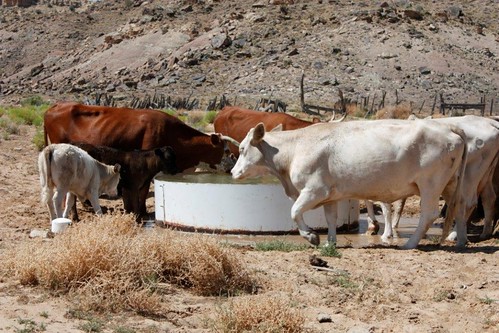Two chapters of the Navajo Nation in Utah are getting new livestock wells, thanks to USDA’s Natural Resources Conservation Service.
Members of the Teec Nos Pos and Red Mesa Chapters use wells drilled deep into the desert floor to water their 1,000 or so cattle. (A chapter is both a rural community and a unit of local government in the Navajo Nation.) But in the 2000s, the Navajo Nation Water Code Administration found, through testing, that these wells had high levels of arsenic, uranium and E. coli, rendering them non-potable for both humans and livestock.
After the discovery, ranchers had to truck in water from up to two hours away for their livestock because they could not afford to drill new wells. Despite their best efforts, because of the harsh desert conditions, some of the cattle died.
Over the past year, through USDA’s StrikeForce for Rural Growth and Opportunity initiative, NRCS was able to partner with the chapters and the Navajo Nation Department of Agriculture to dig two new wells and safely decommission the contaminated wells.
StrikeForce addresses high-priority funding and technical assistance needs in rural communities in 16 states, including Arizona, with a special emphasis on historically underserved communities and producers in counties with persistent poverty. NRCS was able to contribute 90 percent of the cost of digging the new wells and closing up the old wells.
The Navajo Nation, which is about 27,000 square miles—the size of West Virginia—has one of the highest poverty levels of any area in the United States. More than 173,000 people live on the reservation.
Now that the new wells have been drilled, NRCS is helping the Teec Nos Pos and Red Mesa Chapters install pipeline and troughs to provide multiple access points for cattle to drink from.
Because of the success of this project, Fred White, Executive Director of the Navajo Nation Division of Natural Resources, is now exploring more opportunities to enhance and protect the natural resources of Tribal lands with NRCS and other USDA agencies.
Follow NRCS on Twitter.
Check out other conservation-related stories on the USDA blog.

